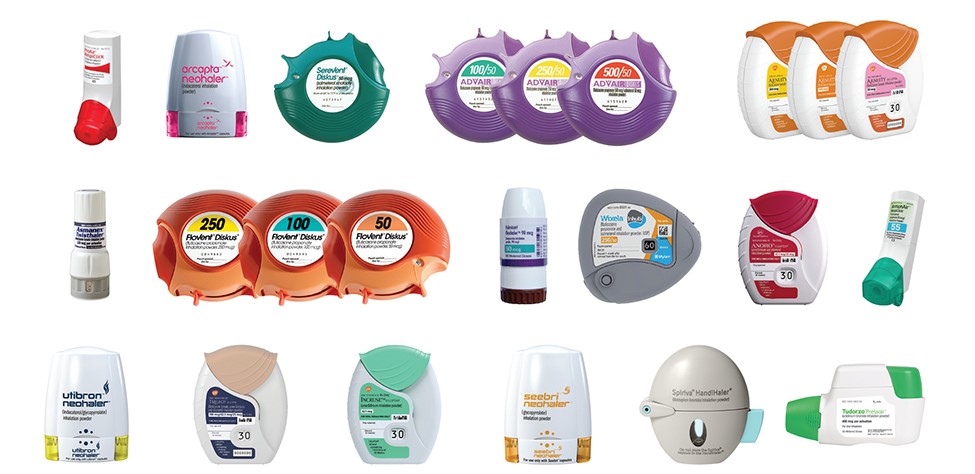Everything about Asthma – Information so Good it’ll Take your Breath Away. By Our Student Pharmacist, Cat Mechler.
What is asthma?
Asthma is an inflammatory condition where something causes the airway to get blocked, inflamed, and possibly produce mucus, making it difficult to breathe.(1)
Asthma severity varies greatly. It can range from being mild to interfering with your daily life. Sometimes your symptoms can get progressively worse, known as an asthma attack.(1) A severe attack can be life threatening. There is treatment that will help control these symptoms and limit the number of asthma attacks you have. It is very important to work with your doctor to keep your asthma under control!
What causes asthma?
There are many different things that can trigger a person’s asthma, including:(2)
- Pollen
- Dust
- Pets
- Mold
- Smoking
- Pollution
- Cold air
- Being sick
- Strong odors
How common is it?
Bronchial asthma is the most common type of asthma and it typically presents in children less than 20-years-old. In the United States, it is the most common chronic condition with 1 of every 12 children having asthma.(1)
What are some symptoms of asthma?
Each type of asthma will have its own unique set of symptoms, but some of the common symptoms include:
- Wheezing
- Coughing
- Chest tightness
- Shortness of breath
- Difficulty talking
How is asthma treated?
Your doctor might decide you need an inhaler to help control your asthma. There are two main types of inhalers to be used in different situations:
- Rescue inhalers:
- These inhalers provide rapid relief and can be used during an asthma attack.
- The most common rescue inhaler is albuterol (ProAir, Ventolin, Proventil).
- Maintenance inhalers:
- These inhalers are important for controlling your asthma and preventing you from having asthma attacks in the first place. They do require daily or twice daily administration to work.
- There are single ingredient products and combination products. Depending on the severity of your asthma, your doctor will decide what treatment is the best for you. There are different formulations that these products are available in, such as a metered dose inhaler (MDI), dry powder inhaler (DPI), and many others.
- Some people may just need a rescue inhaler, while others will need a maintenance inhaler or two to control their asthma. Treatment selection is individualized to each person.
What’s the difference between MDIs, DPIs, and the other inhalers?
Each inhaler formulation has a specific technique that is required for proper administration and to make sure the medicine is actually getting into your body. Without proper technique, it’s as if you didn’t even take the medicine in the first place.
- Metered dose inhalers (MDIs) are a common inhaler type used in asthma. The National Asthma Council has instruction on how to properly properly administer MDIs:(3)
- Remove cap.
- Hold inhaler upright and shake well.
- Breathe out all the way.
- Put mouthpiece between teeth and close lips to form good seal.
- Start to breathe in slowly through mouth and at the same time press down firmly on canister.
- Continue to breathe in slowly and deeply.
- Hold breath for 10 seconds and remove inhaler from mouth.
- Breath out gently.
- Repeat if an additional dose is needed.
- Replace cap.
- If the inhaler contains a corticosteroid, you want to make sure you rinse your mouth out after using it.
- Sometimes the timing of administration is difficult. With MDIs you can use a spacer if needed. A spacer attaches right to your inhaler and acts as a holding chamber that allows you to breathe in the medicine easier.(4)
There are a lot of different inhalers that may have their own techniques to use. There are how-to guides available from the National Asthma Council where you can watch videos of how to use your specific inhaler. Of course, if you’re ever unsure of how to properly use your inhaler, ask the pharmacist!
References:





